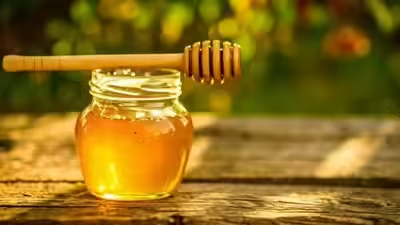
Tualang Honey (Malaysia / Southeast Asia)Place of origin & folklore: Tualang honey comes from bees that nest in tall Tualang trees (Koompassia excelsa), harvested traditionally by climbers in Malaysian rainforests. Indigenous and local communities have used it for wound care and general health. Wild-hive harvesting involves carefully removing comb from tree cavities; for commercial distribution, honey is filtered and bottled with minimal heating to retain bioactive compounds. Tualang shows a strong antioxidant profile and contains phenolics, flavonoids and the usual mix of sugars, enzymes and trace minerals typical of floral honeys.
Tualang is used for wound healing, coughs, and as a supportive therapy; multiple reviews and studies report antimicrobial, anti-inflammatory, antioxidant and even potential anticancer effects in lab and some animal studies — promising but not definitive for broad clinical claims.Buckwheat honey (temperate regions: North America, Europe)Buckwheat honey is produced where buckwheat blooms, cooler temperate zones in North America and Europe. Folk uses include cough remedies and tonics; its dark color and robust flavor distinguish it from lighter floral honeys. Standard frame removal and centrifugal extraction, often marketed as “raw” or lightly processed to preserve antioxidants. Darker honeys like buckwheat often retain Buckwheat honey ranks high in antioxidants (measured by ORAC and phenolic content) compared with many other honeys. It contains trace minerals and antioxidant polyphenols that likely contribute to its activity. Clinical studies have shown buckwheat honey can relieve nighttime cough and improve sleep in children better than no treatment; its antioxidant content supports general claims about respiratory support and immune-system benefits.
Thyme honey (Mediterranean: Greece, Crete, Sicily, Morocco)
Thyme honey-from wild thyme (Thymus spp.) flowers is a Mediterranean staple. In Greece and nearby regions, thyme honey is considered a premium medicinal food and is traditionally used for sore throats, coughs and wound care. Bees forage on thyme blooms in mountainous areas; careful seasonal harvesting and minimal processing are common among artisan producers to retain volatile phenols. Thyme honey often contains thymol, carvacrol and other phenolic compounds (shared with thyme essential oil), plus hydrogen peroxide activity — factors linked to antibacterial and anti-inflammatory effects. Used for sore throats, wound-cleansing poultices and respiratory support. Recent studies report strong antimicrobial activity (sometimes comparable to mānuka in assays) and clinical trials have tested thyme honey rinses for xerostomia and wound care with encouraging results.